Friday Apr 26, 2024
Friday Apr 26, 2024
Saturday, 16 March 2019 00:00 - - {{hitsCtrl.values.hits}}
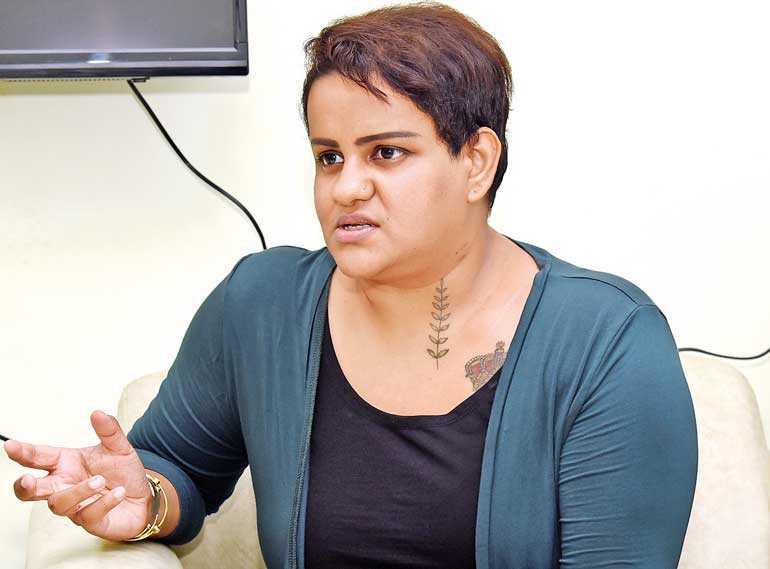
Metal sculpting, once considered as a field dominated by male artists, is a form of artistry unlike any other. Salome Nanayakkara, a stay-at-home mom with a little daughter, is challenging those odds and pursuing her passions to create uncommon beauty out of scrap metal via her venture ‘The Metal Doodler’. Salome is experimenting and finding her own ways of defying the odds in working with metal and has finally found her true calling, copper metal sculpting. It was an unusual sight to see an old bicycle seat metal frame, pliers, soldering iron, and nuts and bolts on her work table. Sitting down with Salome for an exclusive interview, I was in awe of and inspired by her aura of confidence and strength when talking about her work, displaying her completed pieces. Following are excerpts:
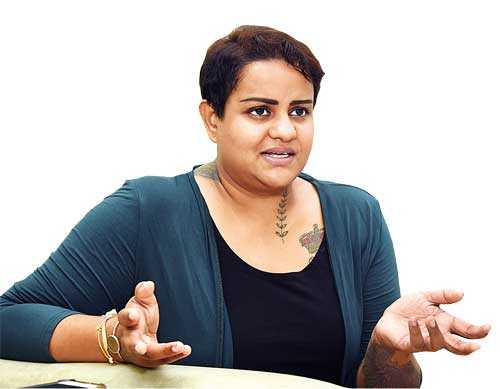
By Ruwandi Gamage
Q: Tell us about the story of The Metal Doodler. How did you come up with the idea?
A: I’ve always been fascinated by metal since I was a kid. I used to collect scrap metal pieces and use them to make cards. It helped that I was also a pro-crafter. I used to be fascinated with anything to do with metal, especially copper sculptures.
I started with making jewellery. I actually wanted to learn to make jewellery myself, so I took some lessons from an old uncle on how to make jewellery from metal. I’m happy that it lead to metal sculpting. That’s how The Metal Doodler came to be. When I started Bed and Bicycle Hostel, an Airbnb, there was a clientele there who liked the sort of jewellery that I made, which was rough and unpolished, as close to its natural state as possible, so I found a niche market there too. I basically made it for people there just as a fun project and never really thought of it as a business opportunity because it was not what I wanted to do long-term.
The first metal piece I sold was almost about nine months ago, a metal heart. A friend of mine told me to display whatever I liked at one of her gallery openings. I randomly did this piece and at the event, I sold it for Rs. 50,000. It was a heart as big as my palm, mounted on a large canvas. That gave me the motivation I needed, because I finally realised that there was a market for these sculptures, people liked my work, and I could do something with it. That’s when I started to experiment and I started working with wire.
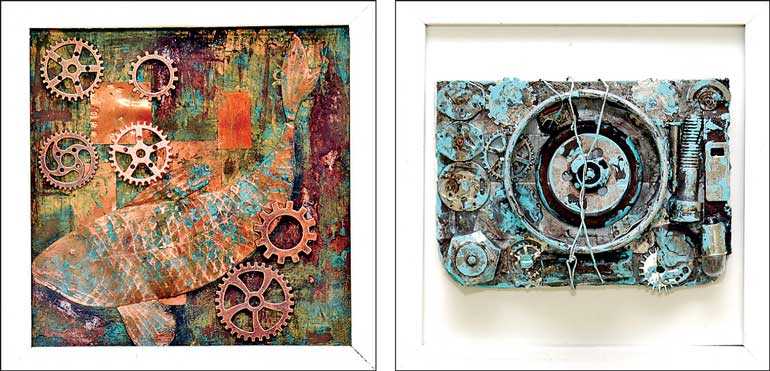
The name Metal Doodler came about with the very first wire sculptures I did. I would use metal wire and make little doodle-like figures of lizards and ants. I used to make tiny sculptures at first and evolved into bigger things using other metals.
Even the bicycle that you can see started as a doodle but this is the first piece where I learnt to weld. I went to a small welding workshop and got them to sit and teach me and that’s the first thing I made after learning to weld. I can’t do welding work here because I have a little one so I go out and use somebody else’s space if I’m welding. That’s why I mostly use different techniques like folding or soldering. I use pliers and fold the metal and manipulate it and I also use wire-wrapping. I had to tone down some ideas I had and resort to smaller scale sculptures that would only require soldering, to ensure my daughter’s safety.
I decided to frame my sculptures because my daughter would pick up and touch things. I realised that people preferred it that way. It was different than what people were exposed to with metal sculptures, because mine was done on paper and framed, a different concept. It seems like it is working and people are embracing it. I’ve been working on this on a full-time basis for about two months now. I believe that I’ve come out as a full-time artist.
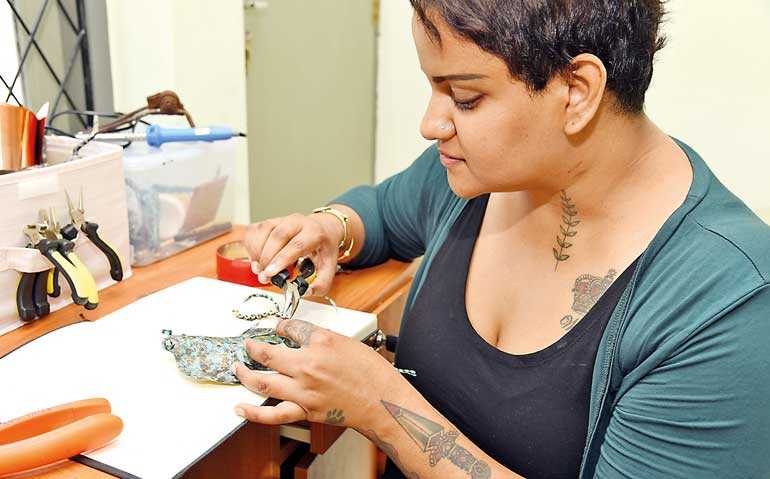
Q: Do you do metal sculptures as time permits or do you only start on a piece when you receive a request?
A: Sometimes it’s on request, but I always work on something on my own. I try not to mass produce because I want the people who buy my work to know that it’s a one-of-a-kind piece. Usually it’s not very difficult to make sure it is one-of-a-kind, because I use scrap metal or any metal pieces I can find most of the time. As a result you can’t really replicate the same piece. I’ve made two to three camera sculptures and they don’t look the same because the materials I’ve used in them are very different. They end up being completely different pieces and no one will get the same piece. Unless I do a set and sell it as a set, it’s very rarely that I can replicate the same thing again.
Ever since I’ve started, I’ve realised that people seem to love koi fish. I made three pieces and two of them are already sold. When I get requests to make koi fish I tell them I can’t replicate it but I can do something related if they like. The artist in me doesn’t like being pushed around and being told what to do. If people give me the freedom to work within a few boundary lines, then I take it on. But if someone says they want an exact same thing, I tell them I can’t do that because it’s not how I work.
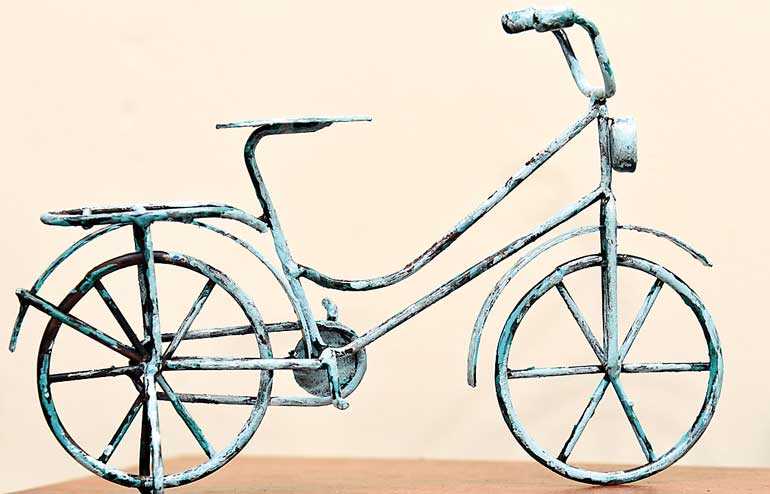
Q: What inspires you?
A: I do research online and I’m exposed to all sorts of things, so inspiration comes from everywhere. All my pieces are original because I haven’t copied anything I’ve seen, I just draw inspiration. If you go online you would probably find other people who have made cameras with different kinds of material, but my pieces are original.
Q: Could you explain your creative process?
A: I do the entire process of the sculpture by myself, except for the wooden frame which I get done because I don’t have the machines. The style of what I do is called ‘assemblage’, which is an old style also used by many famous artists. It means assembling parts together. In essence, it’s like a metal collage on paper.
I don’t have a particular process or a routine in creating these pieces. The only thing I do consistently is source the material. I keep two weekends for that and go to watch shops, Panchikawatte or Pettah and gather materials. I don’t source everything from scrap metal places, I purchase some of the copper.
I try working in the morning because the pieces I work on take almost the entire day. Some pieces have a lot of details that need work. Even with the ones where I do natural patina, which is the natural oxidisation of metal, there’s an art to it. There are different chemicals that can be used to bring out different colours; such as ammonia to bring out dark blue, vinegar and salt will give a light blue. With ammonia, you keep a board of ammonia in a big box and seal it with the metal and keep it overnight. For the light blue patina, I soak a tissue with salt and vinegar and keep it on top of the metal and keep wetting the tissue with vinegar. Over time it turns into light blue, but if you keep it too long it turns into orange, so you must take it out at the right time. It is a lot of trial and error.
For a natural patina without any speedy process, it takes about two weeks to complete. I sometimes use paint to mimic patina too. If it’s paint, I can work on the pieces faster; but if it’s natural patina then it takes time. Since I don’t have a workshop or a safer place to store chemicals like ammonia, I always tend to use salt and vinegar because I can use it at home and it’s safe around my little one. I also sometimes use nail polish, things that I can easily find around my home.
I started to do bull heads with reclaimed scrap metal, other than that I don’t really weld much. I can manage with soldering because the pieces I do are very small. Otherwise I opt to use super glue.

Q: How long does it take to finish a piece?
A: The piece that took a long time to finish was an eagle. I had to cut each of its feathers individually and had to weld it on. That was very difficult to make, but I sold it. That took about two days of intense work.
Q: What are the difficulties you face during your creative process?
A: Sourcing stuff is very difficult here in Sri Lanka. In other countries, everyone does their own thing. They make everything themselves. We don’t have that culture here. Even if I go to a store to buy stuff, they look at me like I’m a weird person because I’m asking them for wire mesh or some sort of sealant. And even when I question them about how something is used, they tell me to give it to my carpenter and that they will know. They don’t even want to explain to me how it’s done, because they can’t understand what I would be doing with it. That sort of attitude is there and it’s really frustrating, but everything I can do I try to do by myself.
Even the welding, it’s all done by men, so it’s really difficult to approach them, sit with them and get things done. It’s been really difficult learning things. It’s difficult because they don’t take you seriously, but when they see what you’re trying to do, they try to replicate it. So there’s a lot of issues.
Another thing is to make sure of my daughter’s safety. She loves doing handwork, so she observes and mimics me. I try not to work while she’s in the house. She started school this year, so we are both going through a lot of changes and trying to find our own pace.
Also, I don’t like working with gloves. I need to touch, feel and do it with my own hands. At the beginning I used to have bruises and would even need to get tetanus shots.
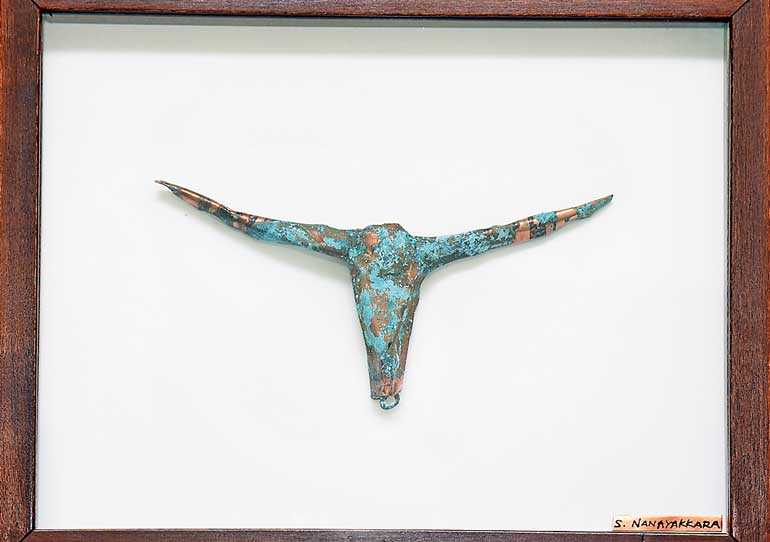
Q: You had previously done art work. Do you still continue that too?
A: I’ve had no formal education or training in art whatsoever, but I’ve been doing art for a very long time, and I’ve been selling my work since I was 16 years old; such as, paintings in acrylic or watercolour. However, it wasn’t consistent, it was not a business and it was not something I focussed on full time. If you check out the Instagram page of The Metal Doodler, you will see some watercolour pieces. You will also some of the paintings I did of brown women in sarees, which I loved doing. I have sold some of those pieces. There’s also a set of three paintings I did of the Weligama Fishermen’s Bay and I have sold two of them already.
I don’t enjoy doing acrylic paintings as much as I do metal sculptures. This is mainly because I feel I’m not as proficient in that field as most others are.
I love working with metal because you don’t really need that kind of education to create metal pieces. It is more like touch, feel, go and trial and error. For most metal artisans their work evolves through experiments. I’m sure there’s a lot to learn, but I feel it is something I can relate to more than paintings. There aren’t many rules that you have to play by, you can be inspired and do things your own way and it depends on your imagination. There’s no limit to creativity. I like the freedom metal sculpturing gives me and the fact that no one can tell me what I did is not right or not text-book correct. I really like the freedom this medium gives me.
Q: What other projects have you taken on?
A: I’ve always been creative. Even back when I was schooling I never bought cards, I always made them. I’m like a DIY person all the way. If there’s anything I can make, I will not buy it, and I’m someone who tries everything like woodwork to metal. I’ve even done furniture cushioning like little stools, which I used to upholster. I like proving to myself that I can do it, I have that attitude. I used to work with resin those days and make little fossil like things, but nothing really caught on. Resin is super expensive and you can’t get proper resin here anyway.
My jewellery making is still ongoing even though it is not something I do fulltime. You can find my Instagram page for that, ‘Riptide Ceylon’. And then there’s ‘Bed and Bicycle Hostel’, a backpackers’ hostel and an Airbnb in Mount Lavinia which I run. It is a place with bunk beds, lockers and bicycles for rent with eye-catching wall-art. You can find more information about it on social media or online.
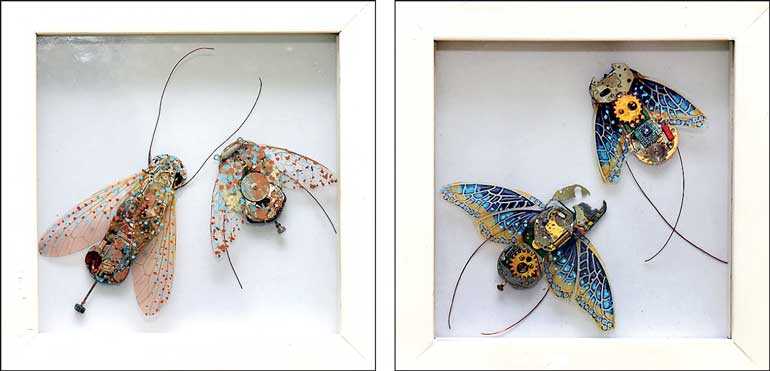
Q: What are your plans for the New Year?
A: I really want to find a little studio space where I can do my metal work and even do welding, so I don’t have to go to the shop for that. I want to purchase the equipment and have a space to keep, work with and display them. This will also give me the space I need to work on more large-scale pieces. I want to push my own boundaries and see what I’m capable of. Those are my short-term goals: buy equipment and set up my own little work shop.
In the long run, I really want to have an exhibition. The response I get when I post pictures of my completed pieces is unbelievable. Some days, if I’m really lucky, I sell my pieces within minutes of posting pictures of them online. Since I sell my work as soon as I complete them, it’s difficult to have an exhibition. When I can afford to work on pieces and keep them without selling them at once, I would love to hold an exhibition of my work. I believe I’m fortunate that I am able to make a living out of my work, because that’s not the case for every artist. It’s very fulfilling doing what I love. I feel like these last two months have been the best ever.


Pix by Ruwan Walpola